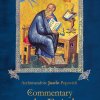Спада у најбоље градитеље виолина у свету између два светска рата.
1908. године из Зворника одлази у Нови Сад на изучавање заната за прављење гудачких инструмената, а занат усавршава у тадашњој Чехословачкој. Боравио је и у Русији, Кини и Јапану да би се најзад 1925. године настанио у САД. Ту га открива чувени северноамерички виртуоз на виолини Елман и назива највећим живим светским градитељем виолина. Упоређује га са Страдиваријем, највећим и најпознатијим градитељем виолина и других гудачких инструмената на којима свирали или свирају највећи уметници.
Елман је чак сматрао да Васићева жица ”G” има боље тонове од Страдиваријусове. Васић је за чувени Елманов квартет направио две виолине, виолу и чело.
О Васићу као уметнику, градитељу виолина, између два светска рата писали су амерички листови Herald-Tribune, Seattle post-Inteligencer и још неки, а београдски ”Илустровани лист” 1928. године објавио је опширан чланак о Николи Васићу уз његову фотографију поводом Васићевог боравка у Француској (због набавке дрвета) и Југославији.
Долазио је у Зворник 1928. и 1930. године. Осећао је носталгију за родним крајем, није заборавио језик, сачувана писма сведоче да се стално дописивао са родбином у Зворнику.
Извор: Мехмед Худовић, ”Зворник – слике и белешке из прошлости”, ДЕС Сарајево, Сарајево, 2000., стр. 196 – 197.





